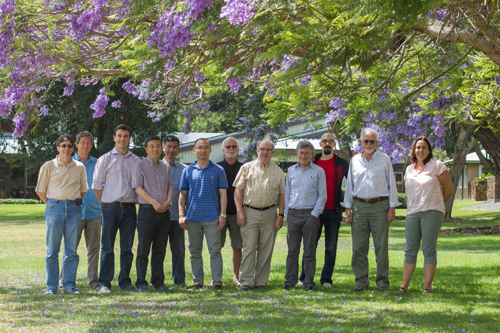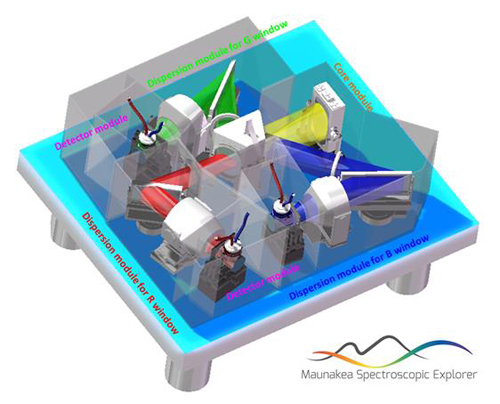On April 26-27, Hawaii, USA, Project office of MaunaKea Spectroscopic Explorer (MSE) held Conceptual Design Review (CoDR) of High Resolution Spectrograph (HRS) at CFHT (Canada-France-Hawaii Telescope) headquarter. The review panel is composed of nine astronomical instrument experts and scientists, who respectively come from Canada, the United States, France, Germany and the United Kingdom. Prof. Zhu, Yongtian and Dr. Zhang, Kai attended this review on behalf of Nanjing Institute of Astronomical Optics and Technology (NIAOT), CAS. Dr. Zhang, Kai reported conceptual design scheme for HRS in detail, the panel didn’t only give full recognition and high evaluation, but also fully agreed to approve CoDR and recommend the NIAOT group to keep working on the Preliminary Design for HRS.
The international cooperation project, MSE, plan to build a 10m-class astronomical spectral survey telescope around 2026. This telescope will equip two science instruments, respectively multi-object (3,000 objects) Low/Moderate Resolution (R=3,000/6,000) Spectrograph (LMRS) in visible and NIR band (0.36-1.8um), and multi-object (1,000 objects) High Resolution (R=20,000/40,000) Spectrograph (HRS) in visible band (0.36-0.9um).
Laboratory of Astronomical Spectroscopy and High Resolution Imaging Technology (LASHRIT) at NIAOT begun to design HRS in 2016. This spectrograph has excellent capability on multi-object and high resolution observation, but brings great challenge in technology. At the present, 10m telescopes over the world enable to observer single object only in high resolution model (R=40,000), which depends on high order dispersion of Echelle grating. MSE-HRS has to use single order dispersion in order to accommodate as much objects’ spectra as possible, and give friendly access to switch working wavelength windows. It means that sub-meter class (0.6-1.0m) single order (m=1) big diffraction angle (≥60°) gratings would be applied in astronomy for the first time, clear aperture of transmission optics would be up to 500mm in diameter, camera must provide similar imaging quality in different working wavelength windows. Breakthroughs in these cutting-edge technologies will be of epoch-making significance.

Fig.1 Photo of all participants in CoDR

Fig.2 Opt-mechanical model for MSE-HRS